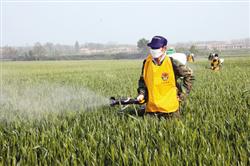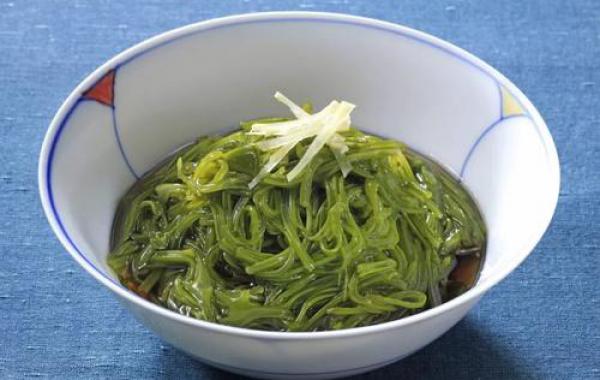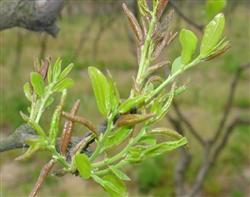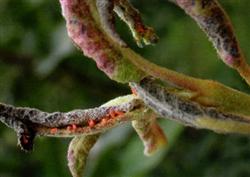midge Learn more about midge
-
What is wheat midge?

What is wheat midge? What harm does wheat midge have? Is there any way to prevent it? Also please net friend help to introduce planting net collated wheat midge harm and control methods, the following list for net friend reference. The harm of wheat midge: wheat midge is a worldwide...
2018-07-17 -
Control measures of wheat midge

Control measures of wheat midge
2018-07-01 -
Harmful characteristics and control time of wheat midge, a worldwide agricultural pest

Wheat midge is a worldwide agricultural pest, which is widely distributed in major wheat-growing countries in Asia, Europe and America. There are mainly two kinds of wheat midges in China, namely, red trematodes and yellow trematodes. Wheat red midge mainly occurs on both sides of the river in the plain area.
2020-11-09 Cosmopolitan agricultural pest wheat sucking harm characteristic -
Integrated control techniques of wheat stem wasp and wheat midge

Integrated control techniques of wheat stem wasp and wheat midge
2018-07-10 -
The latest control measures of wheat trematodes

Wheat midge is a worldwide pest, which is widely distributed in major wheat-growing countries in Asia, Europe and America. Domestic wheat trematodes are also widely distributed in the main wheat producing areas in China. There are two main species of wheat midges in China, namely, red midge and yellow midge.
2020-11-10 The latest wheat suction insects control measures -
Lycium barbarum red gall midge and its control

Lycium barbarum red gall midge belongs to the gall mosquito family. The larvae are harmful to the ovary in the seedlings, forming abnormal buds and can not blossom. Lycium barbarum red gall midge has about 6 generations a year, overwintering as mature larvae in the soil, pupating in spring the following year, adults appearing in buds in mid-April and peak in May, laying eggs at the top of young buds. The larvae ate the ovary and the injured buds were deformed. Fall off because it can't blossom. In late September, the mature larvae were buried in the soil to overwinter. The method of prevention and control is to spray 50% 1605 EC 1000 times in the middle of April.
2019-01-15 -
Control of pear gall midge

Pear gall midge, also known as flower bud maggot, belongs to the family Diptera. The adult lays eggs in the bud. After the eggs hatch, the larvae (maggots) drill into the buds to eat stamens, the damaged buds can not open normally, wither and fall off. In recent years, the damage of pear gall mosquitoes in our county tends to be serious. In 2006, the average damage rate of single flower was 3.25%, and that of serious pear orchards was 27.64%. In 2007, the average damage rate of single flower was 9.25%, and that of serious pear orchards was 45.7%, which has seriously affected the fruit rate of pear trees. According to this site, March 9-
2019-01-16 -
Control of jujube gall midge, a pest of jujube trees

Jujube gall midge (Contariniasp.) (1) alias and taxonomic status jujube bud maggot, curly leaf maggot, jujube maggot, belonging to Diptera, gall mosquito family. (2) the insect is distributed in all jujube areas in China, and the damage is the most serious in Shandong, Shanxi, Henan, Hebei and Shaanxi.
2020-11-08 Species jujube tree pest jujube gall midge control -
What are the damage characteristics and living habits of jujube gall midge

Jujube gall mosquitoes are commonly known as curly leaf maggots, jujube maggots, which harm the young leaves of jujube trees with larvae, making the injured leaves curl vertically to the leaves. The curly leaves were purplish red in the early stage and brownish green in the later stage. The injured leaves gradually withered and scorched and fell off. Jujube gall midge produces 5-6 generations every year and overwinters as larvae in the shallow soil under the tree. The larvae began to roll leaves in late April, and the damage reached its peak in early May. The first generation of pupae was in early June and emerged as adults in early June. A large number of larvae occurred in Beijing from May to June, and the damage was the most serious. The larvae matured in about 10 days. Late August
2019-01-16 -
Ganoderma lucidum pest: fungus gall midge

Mycophila fungicola Felt is also known as Mycophila fungicola. Is diptera, gall midges. 1. The adult is small, about 1 mm long. The head, chest and back are dark brown, others are taupe or orange. Head small, compound eyes large, left and right connected, slender rosary antenna, 11, each section has a circular radial fine hair, male antenna than female insect long, wings broad hairy. The female has a pointed abdomen, while the male has a pair of pincer-like clasps. Egg kidney shape about 0.3 mm long, milk
2019-01-16 -
When will the wheat trematode be controlled?

When will the wheat trematode be controlled? Please guide the control methods of wheat midge can refer to the following methods: first, the occurrence characteristics of wheat midge has formed a close symbiotic relationship with the growth and development of wheat in the long-term survival of nature. its unearthed, pupation, Eclosion, spawning, hatching and so on.
2018-09-09 -
Control methods of jujube gall midge

Due to the small size of each insect, chemical control is generally applied as follows: (1) ground control: before overwintering superior adults are about to sprout (about mid-April), 2.5% trichlorfon powder is sprayed on the ground under the crown, or 25% phoxim capsule 200mm 300 times solution (covered with fine soil or light hoe soil mixing), or 4% acephate powder Or 4% dibromophosphorus powder can be sprayed on the ground when the nursery ground is in between rows.
2019-01-16 -
Control of jujube gall midge

Also known as jujube bud maggot, damage jujube tree buds and young leaves. This insect occurs early, has many generations and has a long damage period. it has a great influence on the development of seedlings, young trees and the fruiting of adult trees. it is one of the main leaf pests of jujube trees. The insect has 5 Mel 7 generations a year in North China, overwintering with mature larvae forming cocoons in the soil, adults Eclosion and oviposition in April next year, and the first ten days of May is the peak period of damage. Control methods: 1. Spray the ground with 1000 times of trichlorfon powder or 25% phoxim, combined with turning the garden to eliminate overwintering.
2019-01-16 -
What is the best way to control edible fungus gall midge?

What is the best way to control edible fungus gall midge?
2020-11-15 -
Control methods of jujube gall midge pests

This insect is commonly known as jujube leaf maggot, which is distributed in various jujube areas all over the country and harms young leaves, buds and young fruits with larvae. The young leaves were tube-shaped curled, purplish red, hard and brittle, and soon blackened and withered. After the bud is killed, it can not open, wither and fall off. The young fruit is not properly nurtured and grows up. When it is the size of a soybean, it turns yellow and falls off.
2018-09-14 -
Control of leaf gall midge caused by insect pests of mango

This insect is a frequent and important pest and is distributed in Guangdong, Guangxi, Hainan, Yunnan, Fujian and other producing areas. The insect is seriously damaged shoot stage leaves, each leaf may have several or more than a dozen galls, which has a great impact on the quality of new shoots, and the damaged leaves leave a large number of perforations.
2020-11-08 Species mango pest leaf gall mosquito control this insect in Guangdong -
Control of trematodes by spraying soil at booting stage of growing wheat

Wheat midge overwinters as mature larvae in deep soil with round cocoons and can be dormant for many years. When the soil temperature of 10 cm rises to about 7 ℃ in spring, that is, wheat begins to break its cocoon and move to the soil surface at jointing stage. In mid-April, wheat enters the booting stage, and the larvae enter the booting stage.
2020-11-08 Seed wheat pregnancy heading stage sprinkler medicinal soil control sucking pulp insect -
It is urgent to prevent and control trematodes in wheat.

Wheat midge is a destructive pest with strong concealment. Once it occurs in a large area, it will take 5 to 7 years to basically control it. It is very important to do a good job in the control of wheat midge. To this end, the reporter recently made a special interview with farmers at Northwest University of Agriculture and Forestry Science and Technology.
2020-11-08 Species wheat suction insects prevention and control imminent -
What are the methods of prevention and control of pear diseases and insect pests in winter?

What are the pear diseases and insect pests in winter? What are the methods of prevention and control of pear diseases and insect pests in winter? We also ask experienced netizens to introduce that the main diseases and insect pests of pear trees in winter are pear weevil, pear wasp, pear gall midge, pear scab, pear black spot, red yellow spider, shell insect and so on.
2018-07-17 -
Jujube gall midge

Distribution and host this insect belongs to the order Pteroptera, Culicidae. Distributed in Hebei, Shaanxi, Shandong, Shanxi, Henan and other jujube producing areas. The hosts are jujube tree and wild jujube tree. The harm and symptoms are that the larvae suck the juice of jujube or sour jujube buds and leaves and stimulate the mesophyll tissue to make the injured leaves roll longitudinally to the leaf surface. The injured site changed from green to purplish red, hard and brittle, soon blackened and withered, and there were often several heads and even larvae in a roll of leaves. Morphological characteristics 1. The adult female is 1.4mm to 2.0mm long; the compound eye is black, reniform; touching.
2019-01-15
